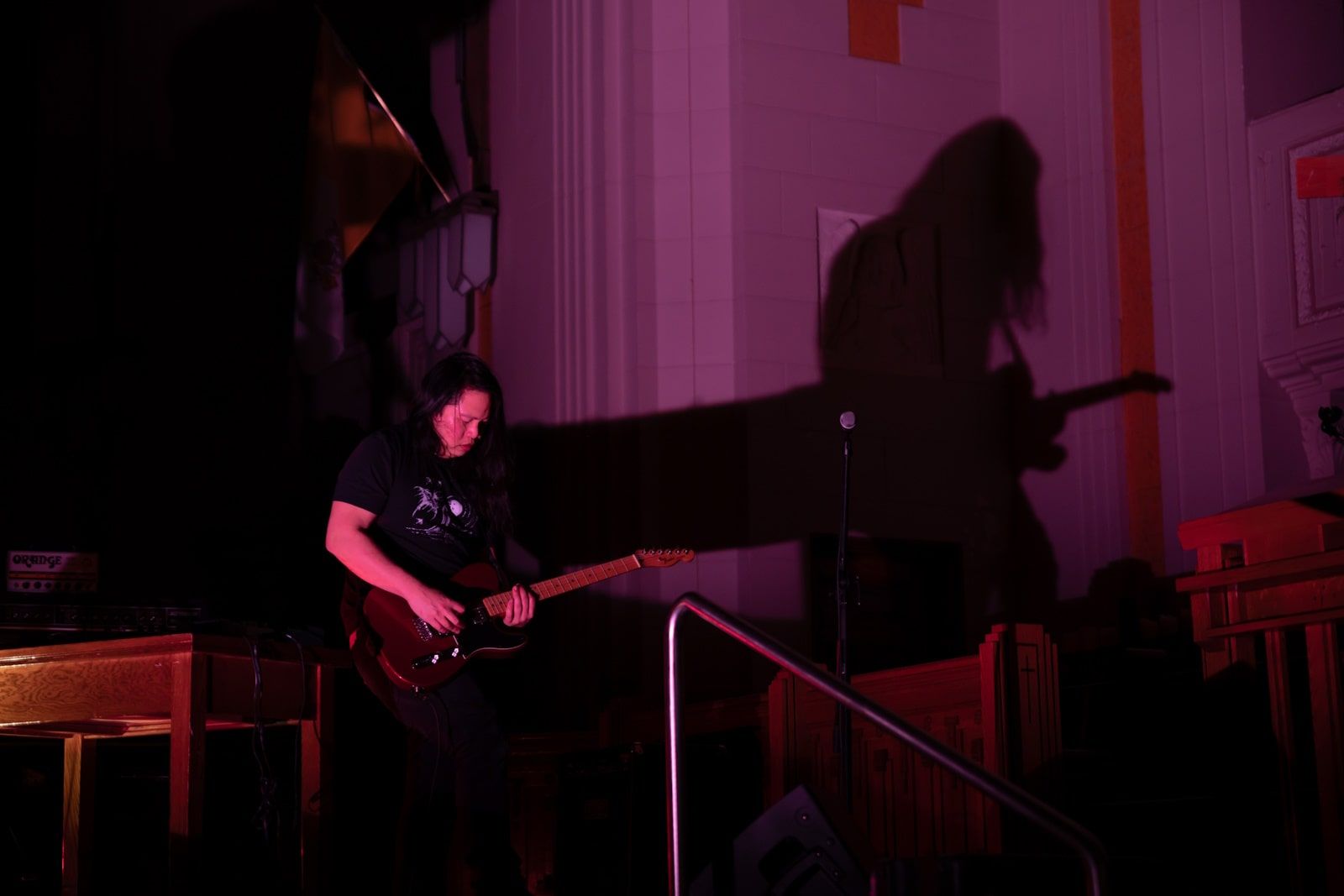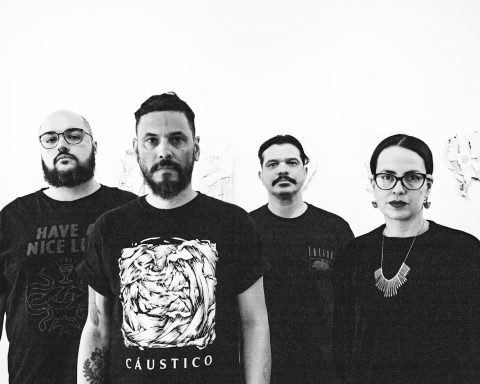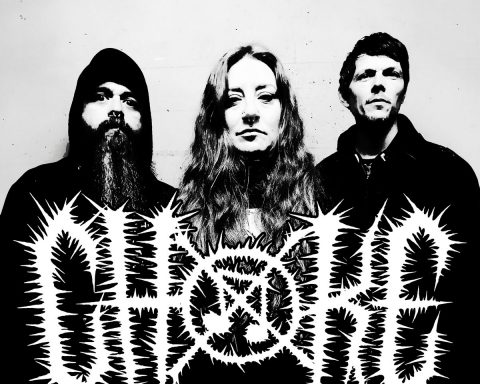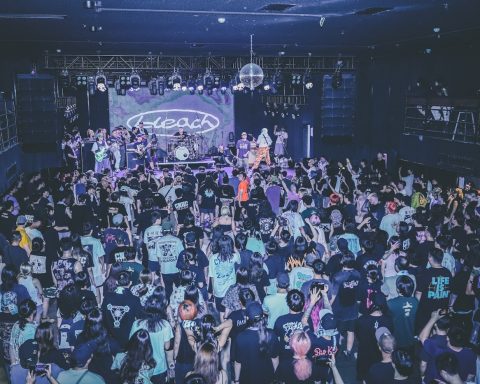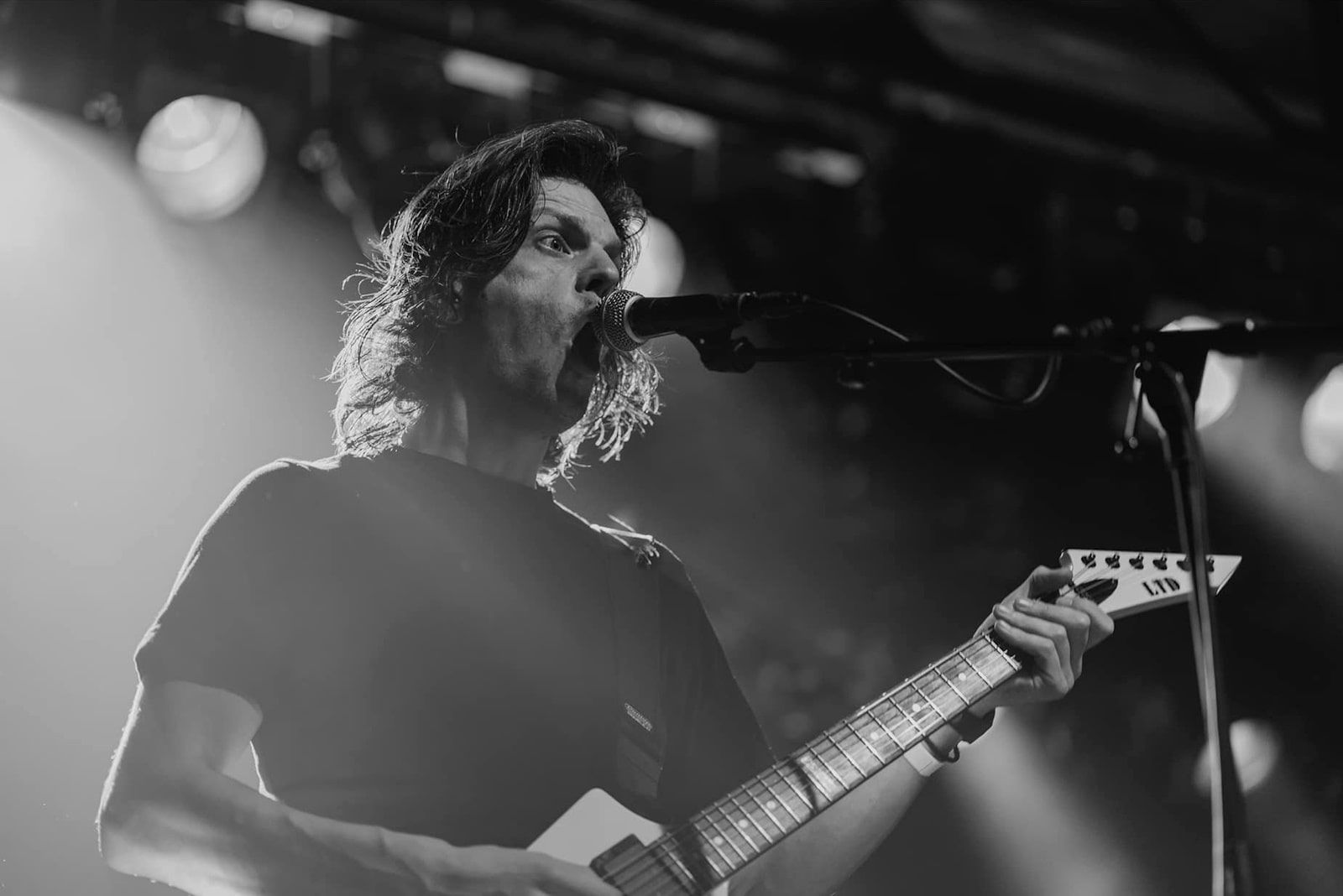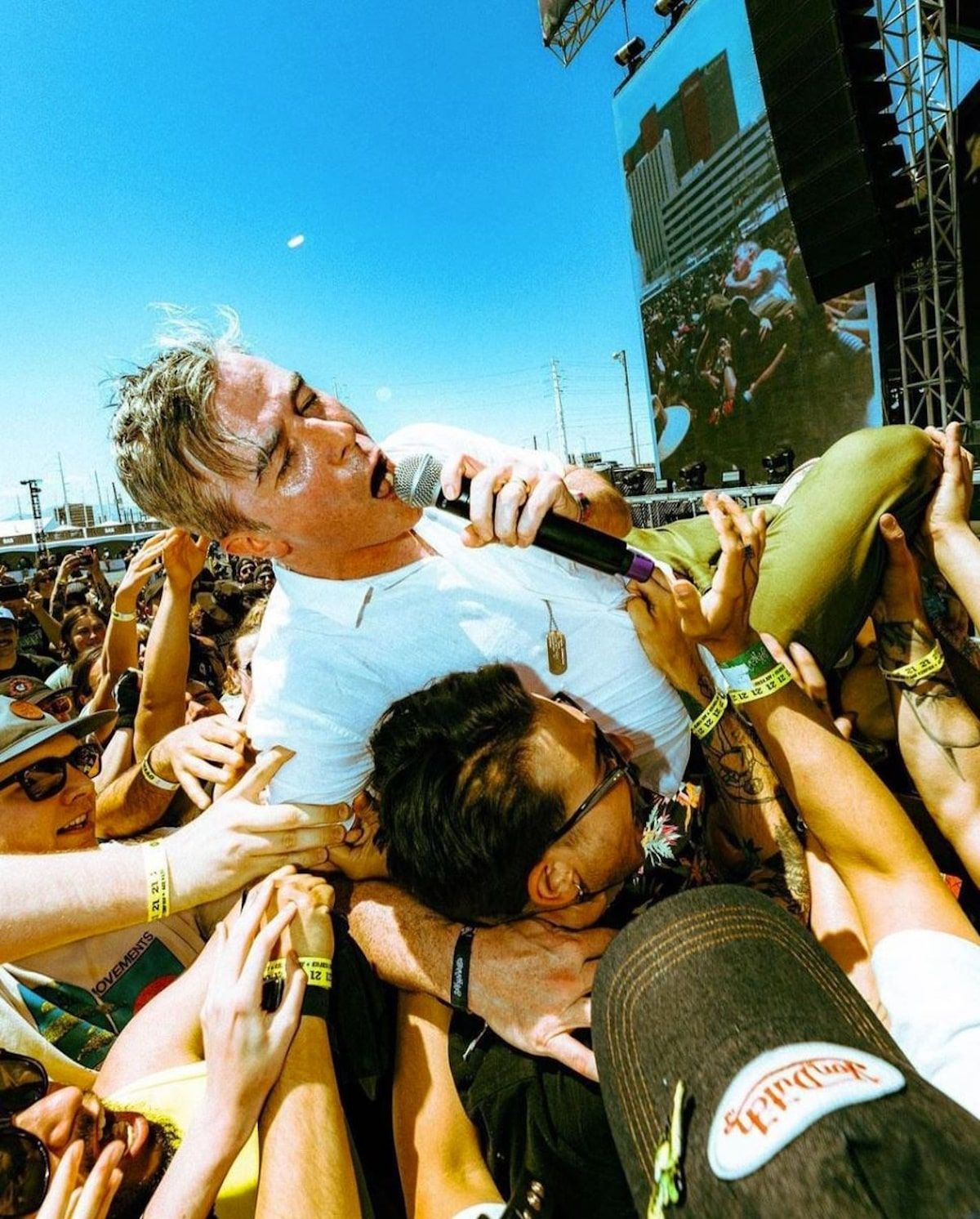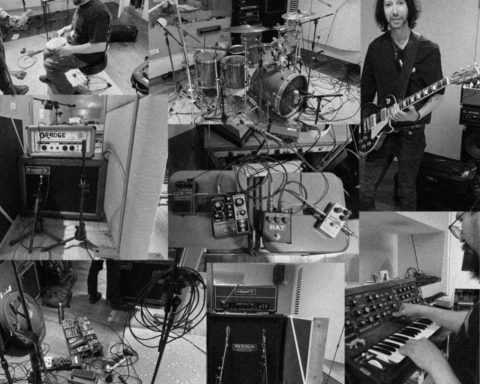In the vast and ever-evolving cosmos of sound, there exists a celestial body known as Thisquietarmy, the brainchild of Montreal-based artist Eric Quach. Orbiting around the nucleus of improvised guitar-based drone, Thisquietarmy has been a beacon of sonic exploration since 2005, illuminating the auditory universe with over 60 releases and 600 live performances in 40 countries. A testament to the project’s dynamism, Quach’s collaborations span a diverse range of artists, from Aidan Baker of Nadja to André Foisy of Locrian, and his performances have graced the stages of renowned festivals such as Mutek and Le Guess Who?
Yet, the celestial body went into a period of hibernation, a cosmic ‘Hiatus‘ if you will, as the world grappled with the pandemic. Quach’s first post-pandemic full-length solo release of new material since “Kesselhaus” (2020) is not a studio album but a live document, a testament to the resilience of art in the face of adversity. Aptly named “Hiatus,” the album is a sonic chronicle of Thisquietarmy’s first solo performance in over two years, held in the hallowed confines of Église Saint-Esprit de Rosemont, a rare Art-deco architectural gem in his hometown of Montreal.
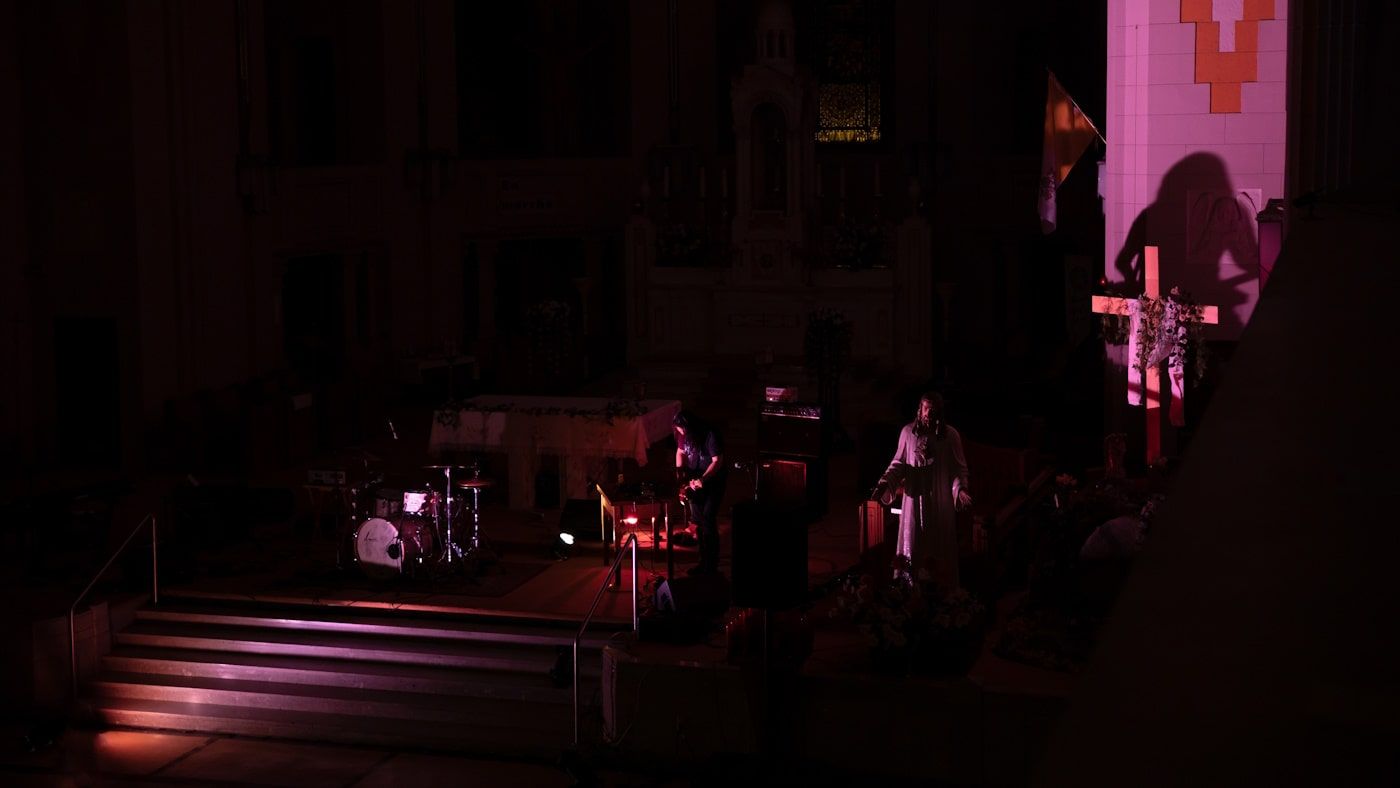
The concert, organized by Montreal-based Hiatus Productions, was not just a return to the stage for Quach, but a symbolic representation of the global pause in activities due to the pandemic. With no rehearsal time, Quach leaned into his reputation for improvisation in atypical settings of worship, using the church’s massive reverberation to execute a hypnotic meditative purge. The result was an intense cathartic sonic ritual that left witnesses reporting sightings of plaster falling from the church’s ceiling and walls, a testament to the power of Quach’s dual guitar and bass amps, and the four PA speakers.
“Hiatus” is a sonic time capsule, capturing the vibrations of Quach’s performance through a Double M/S Microphone by Charles Montambault and the soundboard by Karolanne Carbonneau, with Mathieu Robillard providing visual snapshots of the performance.
Released on May 27, 2023, under Thisquietarmy Records, “Hiatus” is a testament to the resilience of the artist and the power of music to transcend adversity, a sonic rebirth from the silence of the pandemic.
In our candid conversation below, Eric Quach, the creative force behind Thisquietarmy, delves into his transformative performance at Montreal’s Église Saint-Esprit de Rosemont, a unique experience that marked his return to solo performances after a two-year hiatus.
Quach shares his insights on the historical and architectural significance of the venue, the improvisational nature of his performance, and the profound impact of the pandemic on his creative process.
He also discusses the challenges and rewards of his solo work versus collaborative projects, the role of visual elements in his performances, and his aspirations for future projects.
Despite the challenges posed by the pandemic, Quach’s commitment to pushing the boundaries of sound and exploring new avenues of musical expression remains undeterred.
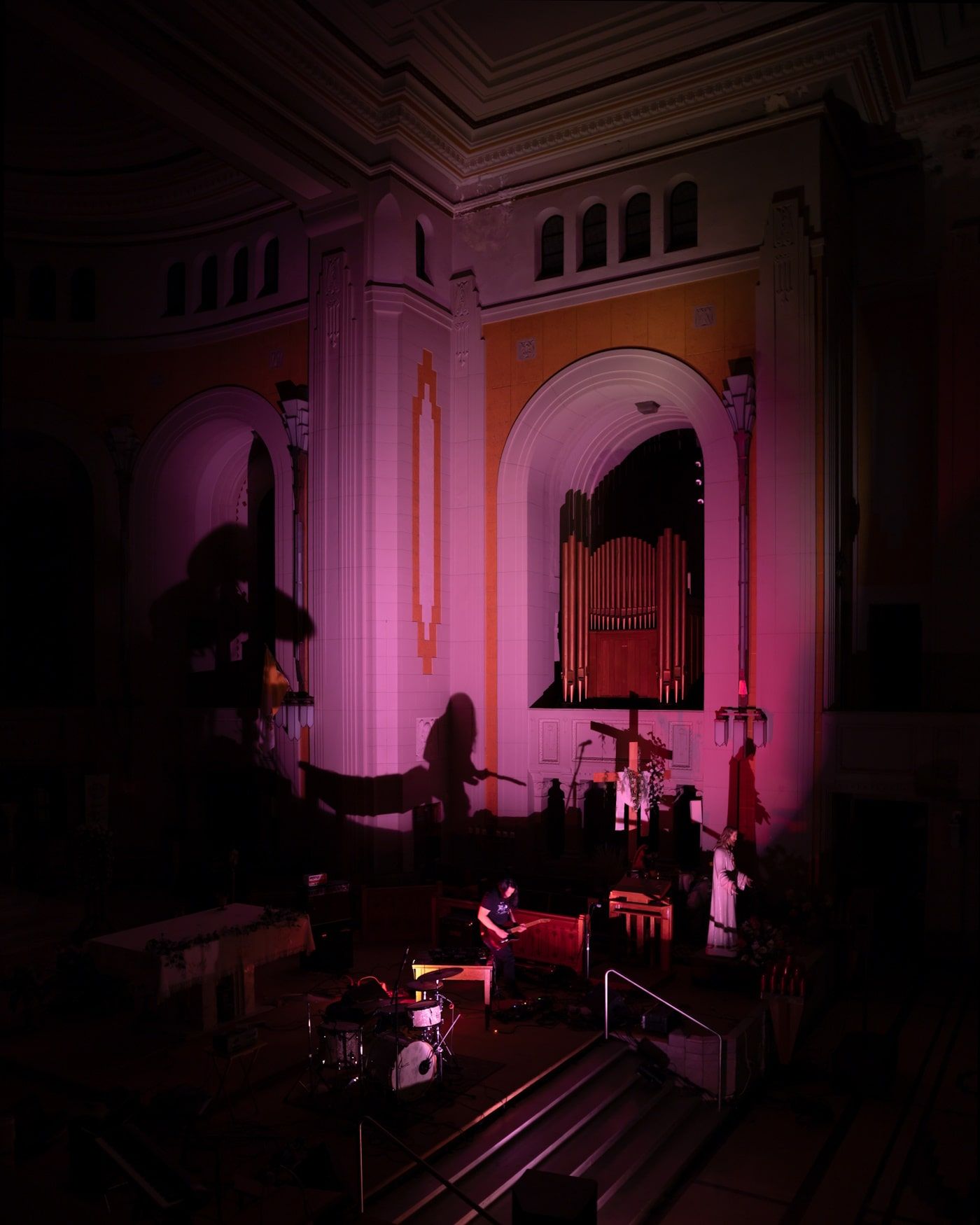
Can you describe your experience performing at Église Saint-Esprit de Rosemont, a church with Art-deco architecture? How did the venue’s unique ambiance and acoustics contribute to the atmosphere of your performance?
Playing this church in Montreal was a special and unique experience for me. I did play in churches in the past, at various locations in Canada or Europe or even in South America, but never in my hometown.
As you might not know, the city of Montreal has 650 churches (200 are catholic). Mark Twain once said “This is the first time I was ever in a city where you couldn’t throw a brick without breaking a church window”. In the 1960-1970’s, the Quiet Revolution gave rise to secularism within Quebec society and it was the start of the separation between Church and State, secularism and removing religion from institutions. It’s crazy to think that this was not so long ago. Fast forward 2022, most of these churches are now very little used and are rotting away. In order to survive, they are being rented out for events for other purposes and thanks to organizations such as Hiatus, we see them more and more used for concerts which is great.
As for the art-deco elements of the church, which are often simple, symmetrical, geometric, streamlined and pleasing to the eye – it’s interesting because that one was built a century ago around the great depression era, after the phases of the industrial revolutions where life was getting modernized with new technologies. The church is symbolic of that past along with the past of every dark era linked to religion, all the way back to the colonization and the conversion of indigenous people all over America back in the 16th century.
For thisquietarmy, it was the perfect venue for a drone ritual performance in every sense but adding the history and everything surrounding it made it an even more intense and profound experience.
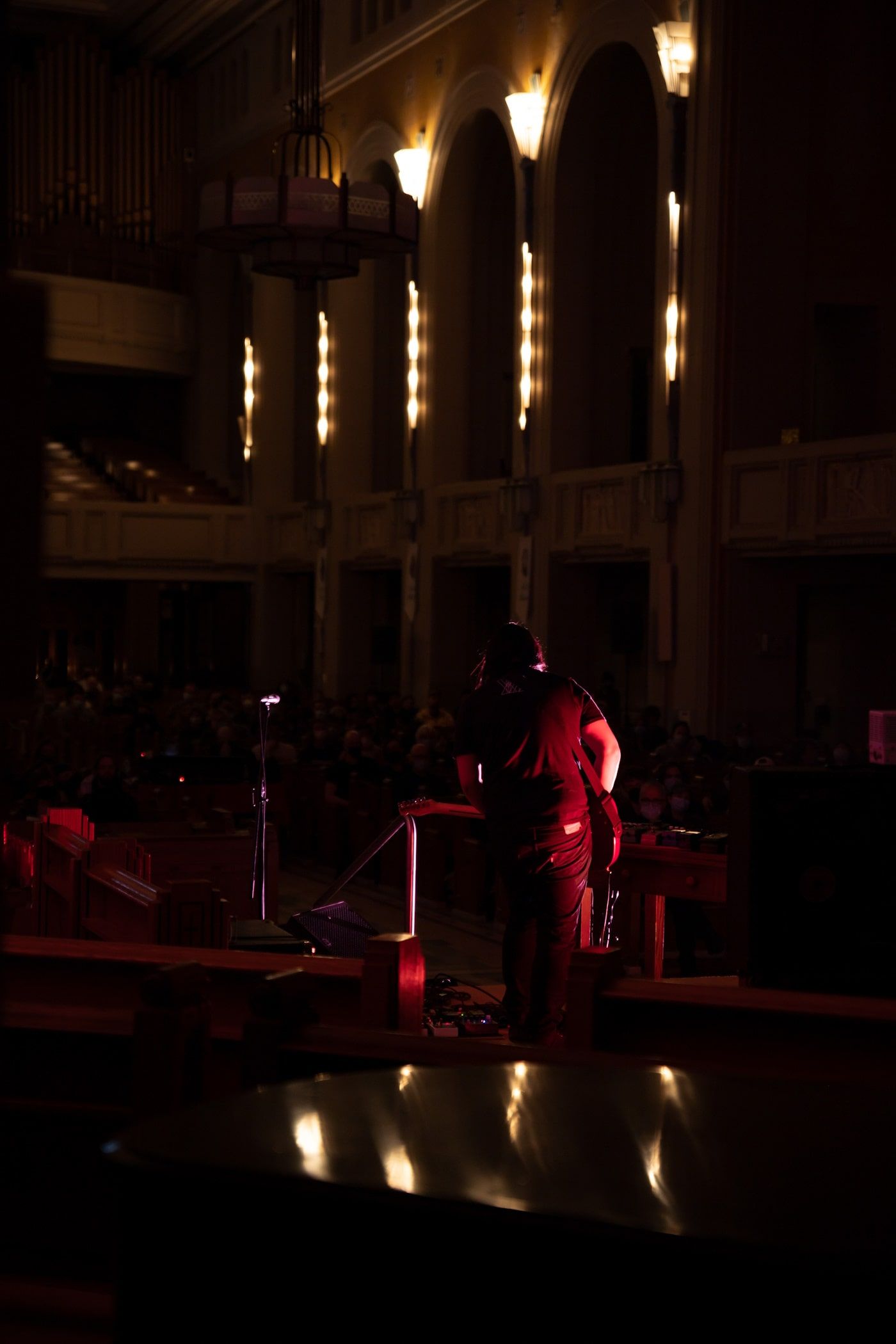
Hiatus is a live document of your first solo performance in over two years. How did it feel to return to the stage after such a long hiatus? Did you approach this performance differently considering the circumstances and the absence of rehearsal time?
To be honest, I was trying to survive the day as I had caught the virus about a week before the concert, and I was still feeling pretty weak. At the time, we still had to wear masks inside and distancing restrictions were still in place, so I mostly kept to myself and tried to meditate and stay away from everyone as much as possible, to preserve energy. I gave everything I had left to the performance, which arguably, made it more intense.
To my surprise, some people said it was my best performance ever, but it’s hard to know whether it was because of the long hiatus, the circumstances or the pressure of the absence of rehearsal. In fact, I didn’t remember anything I played at the time after the concert, and it was only months later when I received the recordings that I had some sense of what happened, music/sonic-wise, that evening.
The title of the album, Hiatus, not only refers to the production company that organized the concert but also symbolizes the global interruption of activities due to gathering restrictions. Can you elaborate on the significance of this title and how it reflects the current state of the world?
My main inspiration for creating mostly revolves around introspections about my life and the state of the world in general. The reason for releasing this document and for keeping the title has many different interpretations for many different valid reasons. I think even just a few months after we are “back to normal”, people have already compartmentalized the pandemic and forgot about the difficulties and the absurdity of it, however way they lived it, and I think it was important to immortalize that event in my body of work, as it was such a strange and surreal reality that we were living. But it will maybe show how we simply re-adjusted to our new lives and how things are arguably even much worse than before, which is even more cause for concern. There was a big reset, but probably not the one we imagined it to be.
Your performances in atypical settings of worship often involve improvisation and utilize the architecture’s reverberation to create a hypnotic and meditative experience. How does the improvisational aspect enhance your connection with the space and the audience?
Whenever I play in an unconventional venue, I usually like to take the opportunity to use the physics of the architecture and use it in my performance. For example, the reverberation plays a big role, if for instance, I play a note, and you hear it echo back after 5-10 seconds, it totally changes the mood and the feeling of what I’m playing at the moment. For that reason, I would rather improvise than play “structured” songs that are better suited on a real stage.
Of course it also depends on the sound system in place. But furthermore, I also brought my pair of new amplifiers that I had purchased during the big hiatus. It was also the first time I played with them live and I could crank them independently of the PA system, which also definitely added more to the performance.
It was also a pretty big church, with distance, there were people all the way to the back while I was playing at the altar, where the first row of people were already far away. I felt like I had to project the sound waves in an even bigger way, somehow, as it had to travel further to the people in the back while I was already hearing the echoes from my position. If you could color the sonic waves and see them travelling through all that space, it would be quite a scenery.
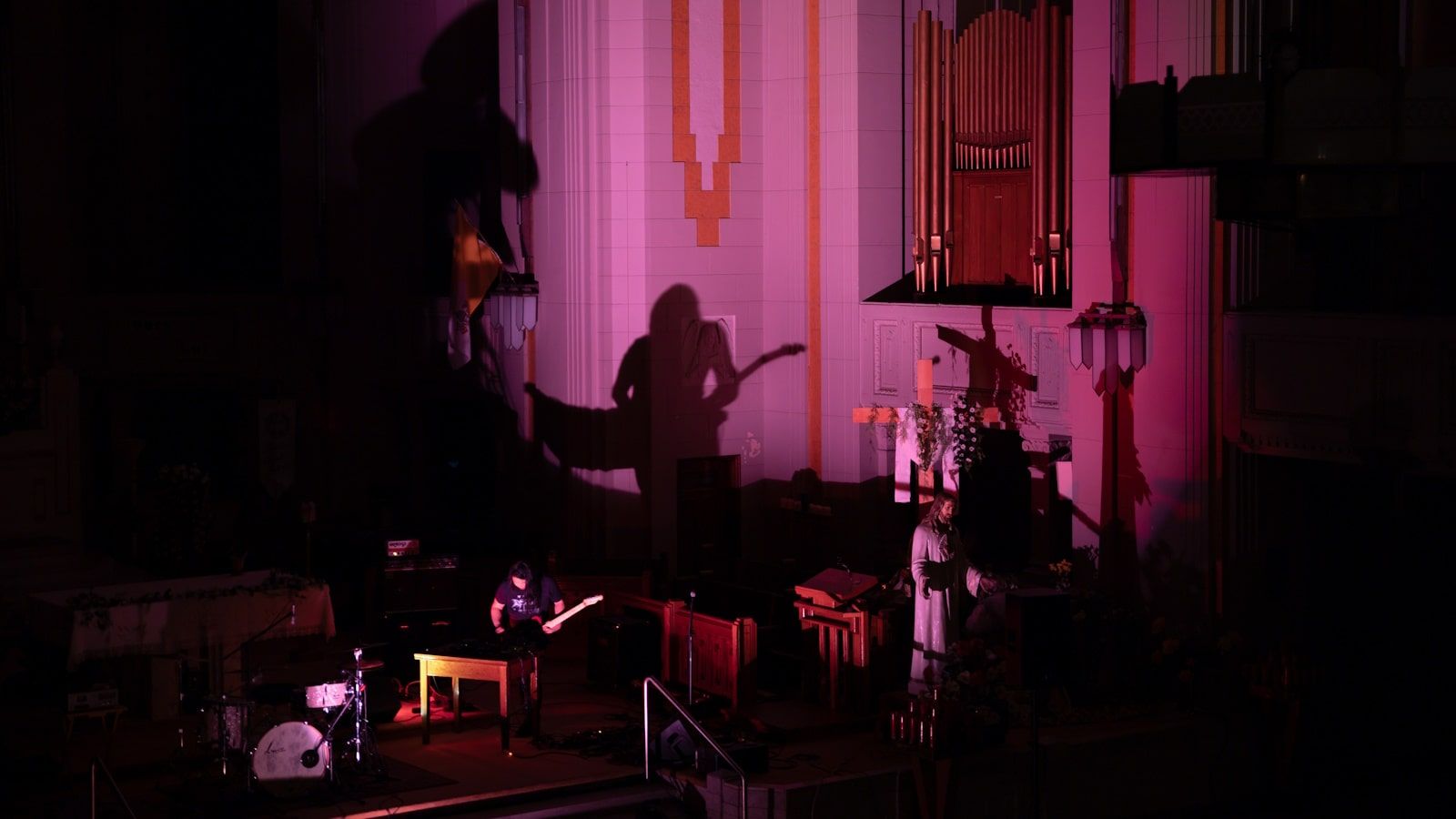
Witnesses have reported seeing plaster falling from the church’s ceiling and walls during your performance, suggesting an intense cathartic sonic ritual. Can you share your perspective on the transformative power of music and its ability to evoke such visceral reactions?
It attests that a live performance must be experienced in person, that the vibration of sounds must be physically felt in your body like these walls do. It is the essence of the interaction between the performer and its audience, in respect to its location and architecture. I would also encourage people to physically change their position in the venue during the concert in order to understand how sonic waves can be a living organism instead of something that needs to be perfectly balanced and still. Its interaction, bouncing off different walls and different angles can change the perspective and the mood of the listener. Also human bodies are very well part of the performance since they absorb quite a lot of waves themselves, meaning that the sound experience is of course drastically different from the front row than from the backseat, or whether you’re surrounded by a lot of people, whether you’re on the side of the stage, or in the middle, or even on stage.
I realize that releasing a version and a perspective of this recording and not let the concert be a mythical one that would only exist for those present is a little counterproductive of live experiences but I’m hoping it will also encourage people to get off their comfortable home and get out there to witness live performances, as we need more support than ever.
The vibration generated by your dual guitar and bass amps, as well as the four PA speakers, was captured using advanced recording techniques. How important was it for you to accurately represent the sonic intensity and immersive nature of your live performance on this recording?
Well it is virtually impossible to do so. Moreso technically, because I only had direct signals recorded from the PA and the recording with a 360 mic that was kindly provided by a film crew that happened to attend the concert to capture footage for their own project.
There is also the difference in perspective between the performer and the audience. This version is simply my own, done as best as I could, with the material I had, in hopes to document the event in an acceptable manner. So in short, accuracy was not that important, otherwise it wouldn’t have been released.
Can you speak about the role of visual elements in your performance? How do snapshots and imagery captured by Mathieu Robillard contribute to the overall experience and help convey the atmosphere of the concert to listeners who were not present?
The visuals are very interesting to me, because I am more of a visual artist at heart, but especially because when I perform, I am unable to look at the audience or take a moment to feel and grasp what is happening in the venue. I am completely immersed into my own world, focusing solely on my strings and knobs, in order to project as accurately as possible what I am feeling inside at the moment of.
When I talk about the discrepancy of perspective between the performer and the audience, the visual elements also come to play. It’s a much richer experience for the public than it is for the performer in my opinion, as they get to enjoy both visuals and sonic components of the performance.
Hiatus also hired a light designer to play with the lights for each different performance, and Mathieu also had full access to areas in the church and could shoot from angles that was only accessible to him, so sharing his snapshots was also very important to me, as it gives a whole different vibe to the record, which also differs from the audience’s perspective of the live performance.
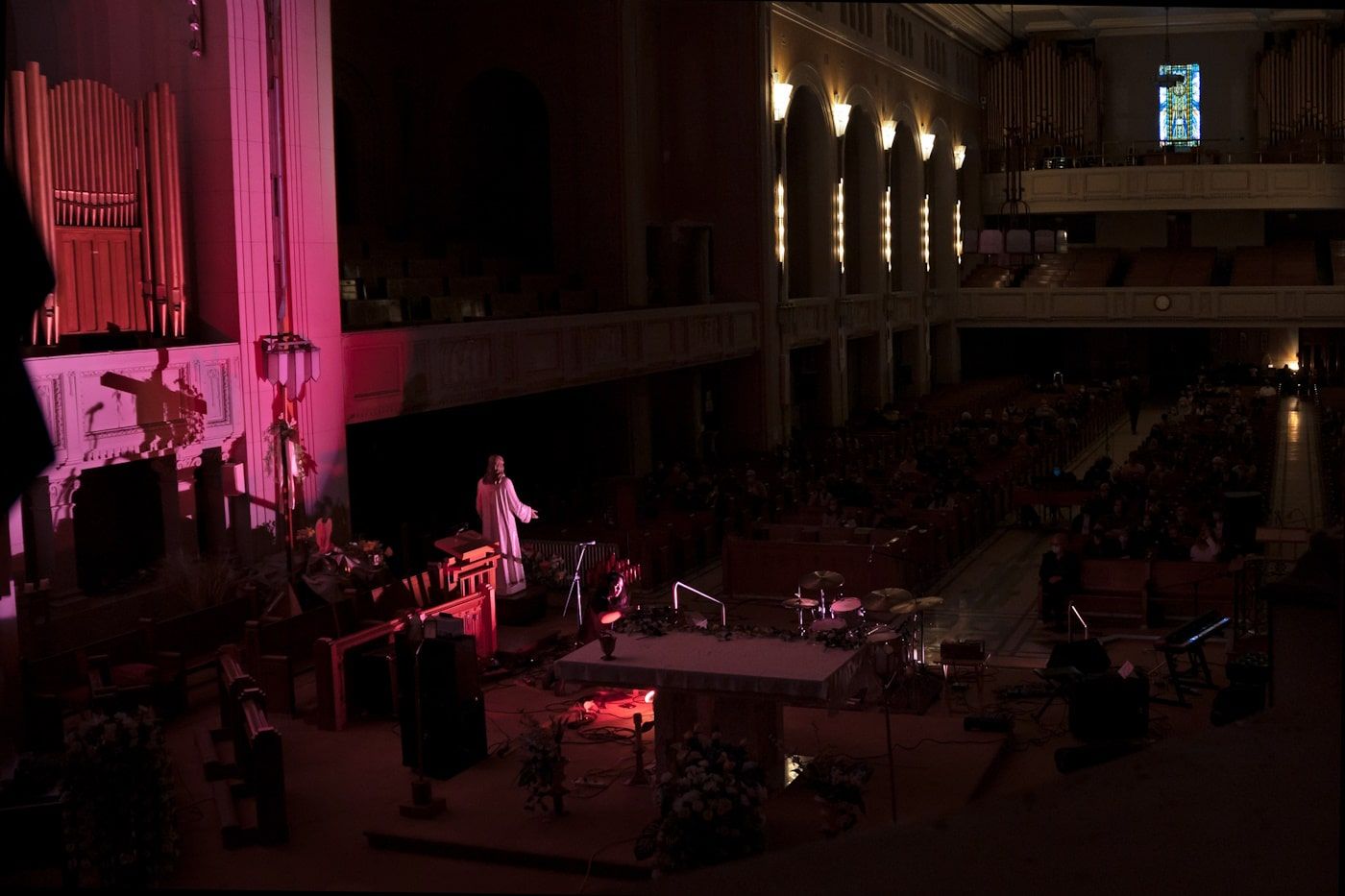
After focusing on collaborative releases and other projects during the pandemic, how does it feel to release Hiatus as your first post-pandemic solo full-length of new material? Did the circumstances of the past year influence the creative direction and thematic elements of the album?
In a way, I felt like it was “already” time to release something as my last solo album was released in 2020, which was recorded in 2019. I don’t think I was forcing a release, but I also did two major solo tours since then, even though I mostly only worked on many other collaborative projects during the pandemic such as with Thisquietarmy x Away / N / Sleepwalker / Hellenica (Houses of Worship), Some Became Hollow Tubes, Hypnodrone Ensemble, etc. Because Hiatus wasn’t strictly a studio album, I feel like I still have a lot of work to do to determine the next direction of the next “real” album.
How do you perceive the relationship between your solo work and your collaborative projects? What unique aspects does your solo performance offer you as an artist that differ from working in a collaborative setting?
With collaborative projects, it’s not just about me, or it’s not even about me, period. It’s about the symbiosis of different elements that are coming together. It’s a dialogue with the others, reactions to the others, common ideas with the others or differences with the other. It’s about chemistry, personal friendships, and mutual respect for each other’s work.
A solo performance is always very risky, as you can only rely on yourself where you have 100% control but you also feel like you have no control at all. After close to 700 performances in the last 15+ years, it’s also a challenge to push yourself further and bring new ideas and not rely on past elements that once worked out quite well. Going forward, in any way possible, is very demanding and very hard on yourself.
Looking forward, what can listeners expect from your future projects? Will you continue to explore the intersection of improvisation, architecture, and sonic experimentation in your upcoming works?
There are a lot of projects in the pipelines! And this interview is already too long, but for those who are still reading – well, asides from the same old, I’m also exploring slightly different avenues in terms of making music and sounds.
For example, I’ve just completed a public sound installation with Hellenica for FIMAV which was exhibited for a whole week outdoors – it consisted of two public payphones that were converted in playable instruments, and everything that is played goes into this sonic loop in which a wall of soundscape is created and played back in the background. We also produced a short-film called “Migration” which got screened at various festivals last year. We’re also exploring A/V immersive 360 projects with a 3D artist.
I’m also undertaking a creative music residency of one month in the north of Quebec where I will be working with local musicians in order to create new works. And as usual, still meeting new people to collaborate with, along the way, along the road, that are inspiring and gives me a boost to pursue my practice. And new tours, new horizons, new opportunities… No time to rest!



